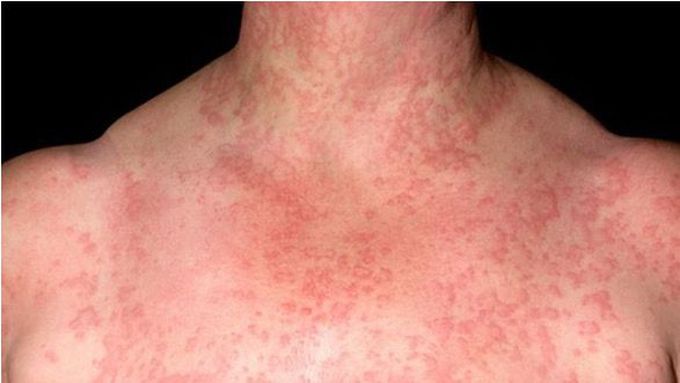


Water allergy
Known to have ever affected only 30 people, water allergy or "aquagenic urticaria" is extremely rare, but its existence has been confirmed by the Medical Review Board. It usually occurs late in life and often as a consequence of a hormonal imbalance brought about by giving birth. The symptoms of aquagenic urticaria or water allergy (being allergic to water) are similar to all the other types of physical hives that are caused by various things. This may include wheals or small raised hives, intense itching, skin flushing in the areas that are prone to water contact. The symptoms may appear within minutes after the body comes in contact with the water.[8] Aquagenic urticaria is a rare condition in which itchy urticaria (hives) develop rapidly after the skin comes in contact with water, regardless of its temperature. The hives associated with aquagenic urticaria are typically small (approximately 1–3 mm), red- or skin-colored welts (called wheals) with clearly defined edges. It most commonly develops on the neck, upper trunk and arms, although it can occur anywhere on the body. Some people have itching too. Once the water source is removed, the rash generally fades within 30 to 60 minutes.

